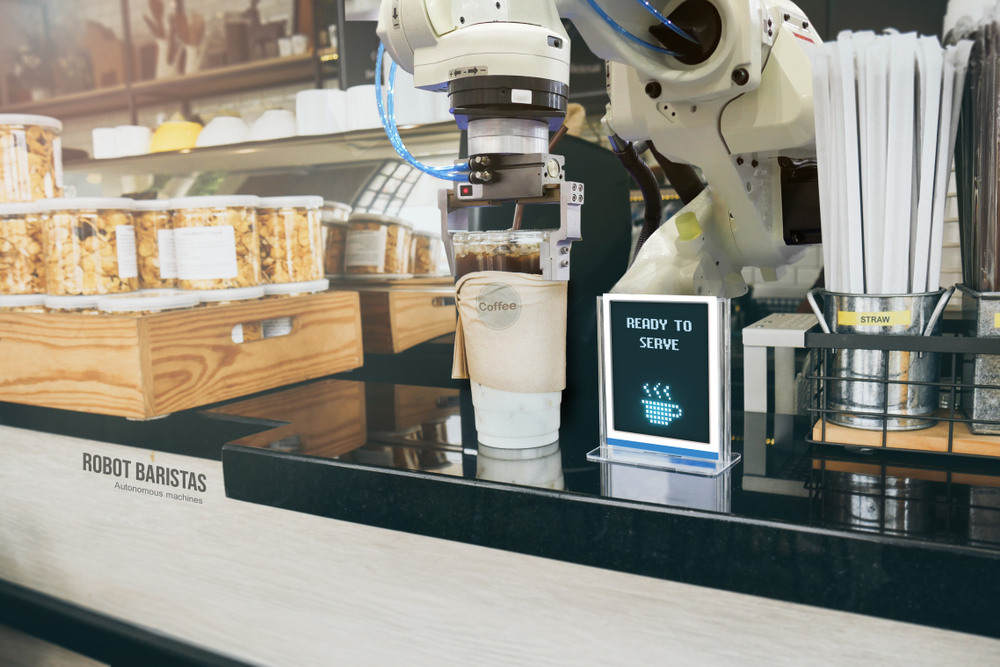If the idea of robots in the kitchen conjures up nightmare visions of 3CPO or R2D2 donning chefs’ hats and clanking noisily into your workspace, then relax.
We’re not talking about anything of the kind.
It’s true that Flippy, the burger-flipping robot, has been a fixture at Caliburger in Pasadena for a couple of years now. And there are increasing numbers of “robot arm” variations that are becoming capable of performing more and more cooking functions.
The Implications of Robots for Restaurant Technology
But there’s no way that robots in the kitchen or other AI installation will ever replace the creativity of a truly great chef.
They’re better thought of as a range of software applications and mechanical installations rather than any humanoid creation of science fiction.
But there are ways in which these automations can help streamline certain repetitive tasks. And in doing so they may enable greater social distancing between staff in the kitchen, which is going to be vital for as long as the COVID-19 pandemic continues.
Today’s generation of robots may also be able to reduce staff headcounts and time spent on training, while also helping significantly in tackling the problems of food waste and contamination.
What Today’s Kitchen Robots Can Do
The impact of the Internet of Things (IOT), AI and 5G communications was already set to revolutionize restaurant technology.
Sensors in fridges, freezers and storage areas will be able to communicate with each other, collect and interpret data, and autonomously regulate their functions.
Cooking efficiency will also be greatly enhanced by sensors that determine exactly when food is perfectly cooked, thereby increasing customer satisfaction, reducing food waste and liberating chef time.
The coronavirus pandemic, though, has accelerated the adoption of restaurant robotics, with customers increasingly wary of the face to face contact that the business model has traditionally demanded.
Smoothies, Salads, and Pizzas – the Robot Chefs at Work
California start-up, Blendid, for example, now markets a robot smoothie maker that responds automatically to customers’ recipe specifications. The only input required from human employees is to refill the raw ingredients one or twice a day, depending on demand.
Meanwhile “Sally”, a salad making robot manufactured by Chowbotics of Hayward CA, is becoming increasingly popular. The size of a domestic refrigerator, Sally is capable of making up to 65 salads before its 22 stored ingredients need restocking
Demand for Sally has spiked more than 60% since the onset of the pandemic, and while most new sales have come from hospital and colleges, it’s easy to see how she might be an invaluable labor-saving device for the right restaurant outlets.
And as if that wasn’t enough, a French company, Pazzi, recently installed what it asserts to be the world’s first pizza-making robot, able to slice and dice the customer’s chosen ingredients, spread the topping on the base, put it in the oven, and then box the final product.
Robots in the Kitch: The Future
Not all customers will welcome these developments, and it’s probably safe to assume that they will have relatively little impact on traditional fine-dining type establishments.
But he type of fast-food and fast-casual outlets that depend heavily on millennials and Generation Zers – the early adopters – for their trade can ill-afford to ignore the cost-saving opportunities that these new technologies will offer.
And it’s not just a question of trying to attract customers through novelty or gimmicks for their own sake.

